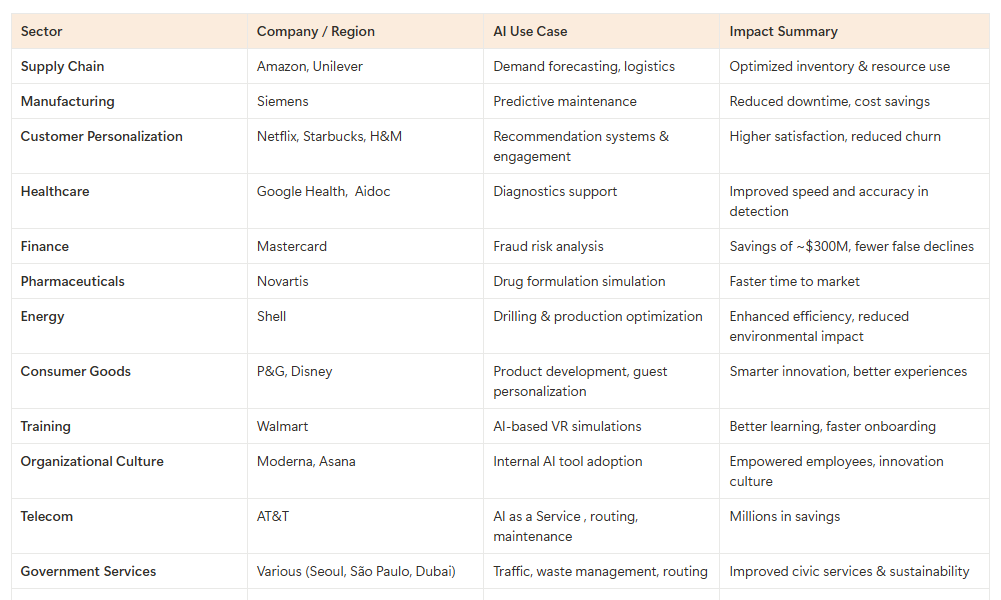Artificial Intelligence (AI) is transforming industries, helping organisations make smarter decisions, optimise operations, and unlock new business opportunities. However, moving from isolated AI experiments to organisation-wide adoption can be complex. Success requires a clear framework that aligns technical expertise, business strategy, and operational execution. Scaling AI in business workflows is no longer optional; it’s essential for companies seeking operational efficiency and competitive advantage.

Start with a Data-Centric Approach
Data is the backbone of AI. Without high-quality data, even the most advanced AI models will fail.
Key steps for a data-driven AI strategy:
- Maintain clean, well-structured datasets
- Use data dictionaries for consistent data management
- Implement robust governance to ensure accuracy and security
Best practice: Start small with proof-of-concept projects, then iterate. Feedback loops help refine AI models and make them adaptable to real-world business challenges.
Overcome Strategic and Operational Challenges
Many AI initiatives stall due to unclear objectives or integration issues. To succeed:
- Define measurable business goals aligned with AI projects
- Plan for seamless integration with legacy systems
- Design AI solutions that are flexible and scalable
Example: A fraud detection AI model can later be expanded into predictive alerts, dashboards, and automated reporting, providing broader business insights.
Implement Strong Governance and Ethical Practices
AI governance ensures your models are reliable, compliant, and ethical.
Governance essentials:
- Clear accountability for AI deployment
- Bias mitigation in algorithms
- Data privacy and security compliance
Best Practice: Make AI transparent. Explain how models make decisions and prevent unintended consequences to maintain trust, especially in sensitive sectors like healthcare and finance.
Build the Right Team Structure
Collaboration is key. The structure of AI teams depends on your organisation’s maturity:
- Early-stage: Decentralised teams embedded in business units
- Mature organisations: Centralised or hybrid models combining analytics, IT, and business functions
Insight: Analytics teams develop models and insights, while IT ensures infrastructure, governance, and technical support. Cross-team collaboration remains essential.
Manage Projects and Mitigate Risks
Scaling AI requires solid project management. Key practices include:
- Resource, budget, and timeline management
- Early identification of risks like data gaps, model accuracy, or stakeholder resistance
- Regular evaluation of tools and technologies for compliance and performance
Pro Tip: Clear communication with stakeholders ensures smooth adoption and reduces resistance to AI-driven changes.
Deliver Real-World Business Value
AI applications vary by industry but consistently drive value:
Healthcare / Public Health:
- Track disease spread, predict outbreaks, and guide interventions
- Enhance diagnostic accuracy (e.g., medical imaging AI)
- Personalise patient treatment plans and optimise hospital workflows
Retail & Supply Chain:
- Optimise inventory and forecast demand
- Detect logistics bottlenecks and prevent disruptions
- Personalise product recommendations and pricing strategies
Finance & Risk Management:
- Detect fraud and unusual transactions in real-time
- Automate credit scoring and risk assessment
- Optimise portfolio management and market predictions
Human Resources (HR):
- Screen resumes and match candidates using AI-driven recruitment
- Predict employee attrition and enhance retention strategies
- Deliver personalised training recommendations and career pathing
Marketing & Sales:
- Segment customers and tailor campaigns with predictive analytics
- Automate content creation and ad targeting
- Use chatbots and conversational AI to improve customer support and lead generation
Operations & Manufacturing:
- Implement predictive maintenance to reduce downtime
- Optimise production scheduling and quality control with computer vision
- Use digital twins for real-time process simulation
Customer Experience & Support:
- AI-powered chatbots for 24/7 support
- Sentiment analysis to improve feedback handling
- Personalised recommendations to boost satisfaction and loyalty
Legal & Compliance:
- Automate contract analysis and compliance monitoring
- Identify regulatory risks and ensure data privacy compliance
Research & Development (R&D):
- Accelerate product innovation through AI simulations and trend analysis
- Identify emerging market opportunities and competitive insights
Scalable AI solutions can adapt across departments, creating new revenue streams and operational efficiencies.
Integrate AI into Daily Operations
For AI to drive real impact, it must be seamlessly embedded into everyday workflows rather than functioning as a standalone tool. Beyond dashboards and alerts, organisations should focus on deep operational integration, such as:
1. Automated Decision Triggers
AI recommendations can automatically reorder inventory, launch marketing campaigns, or adjust pricing in real time based on demand and competitor actions.
2. Workflow Automation
AI streamlines HR and finance operations—flagging top performers for promotions, suggesting training programs, pre-approving low-risk transactions, or escalating anomalies for review.
3. Predictive Operations
Manufacturing and logistics teams benefit from predictive AI: maintenance alerts schedule technicians automatically, and delivery routes are optimised dynamically based on traffic, weather, and demand.
4. Customer Engagement
CRM-integrated AI suggests the next best action for sales teams, while chatbots escalate complex queries with context-aware suggestions.
5. Risk & Compliance
AI scans contracts for risky clauses, monitors regulatory compliance, and blocks suspicious financial transactions in real time.
6. Product & Service Personalisation
Streaming platforms and retail websites use AI to personalise content, recommendations, and bundles for each user.
7. Cross-System Integration
AI insights are synchronised with ERP/CRM systems and feed directly into planning tools, enabling real-time adjustments to production, marketing, and operations.
AI in Action Across Sectors
